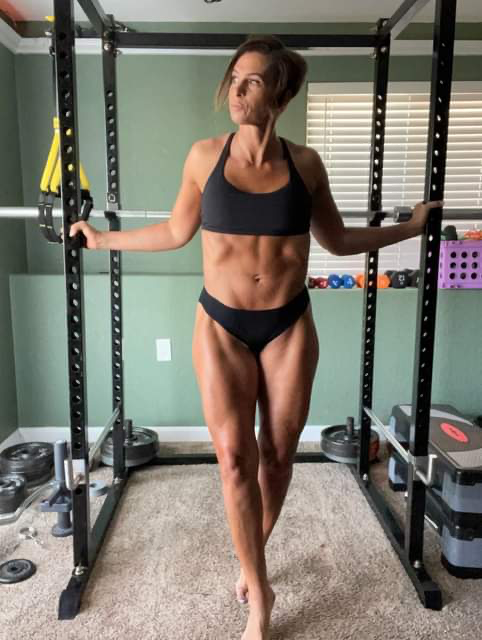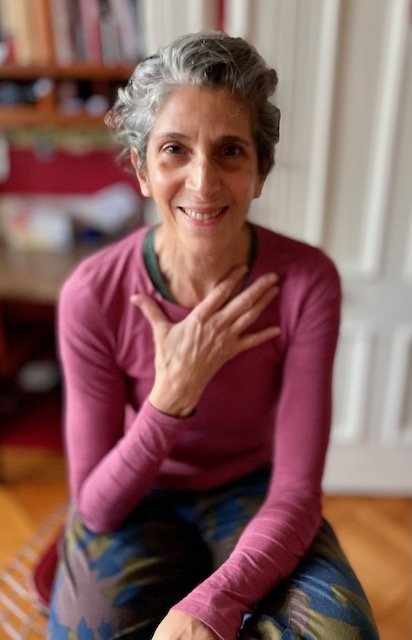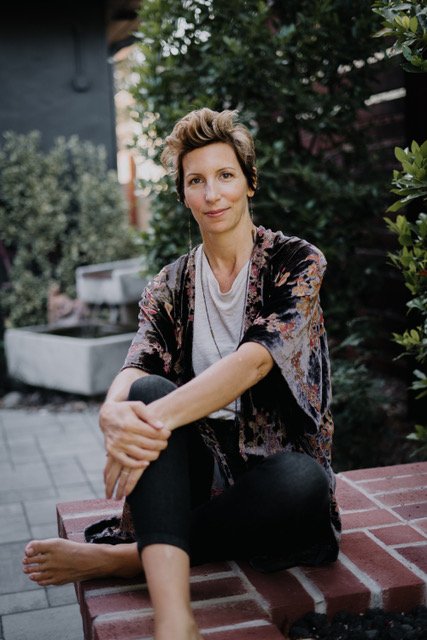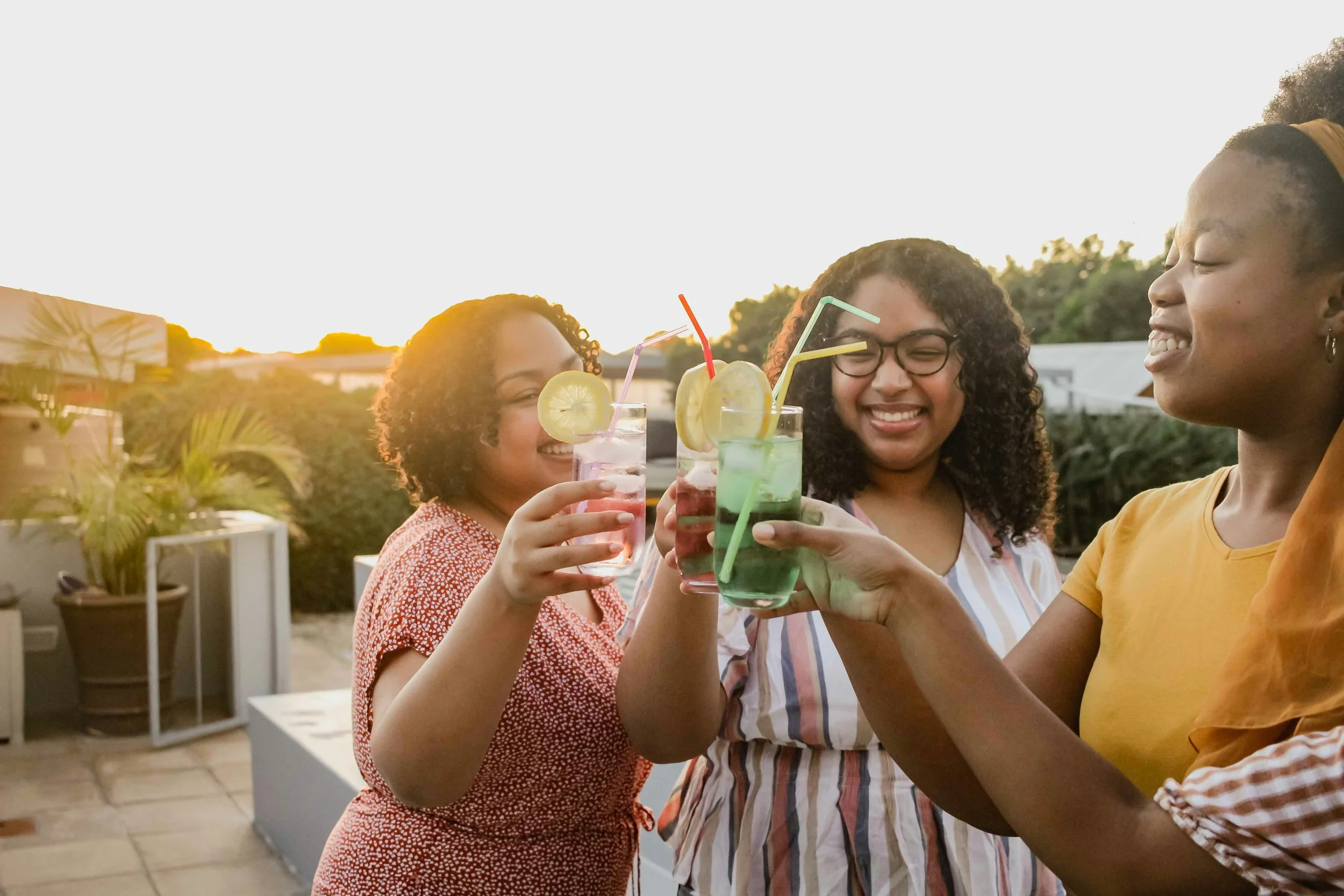Let's Get Physical: Busting Fitness after 40 Myths
I’m going to get straight to it: There’s a myth we need to bust. It’s that you can’t be physically strong after 40.
I remember the first time I heard that we physically peak in our 20s and that it’s all downhill from there. I was in college. The course was Psychology of Aging. This is how ingrained ageism is in our society. But you already know this fact, so I’m not going to get intellectual about it; I’m going to get physical.
I asked three women, all of whom have inspired me to get up and get active, to share a few myths they’d like to bust about fitness after 40, along with their favorite apps and exercise programs you can use too.
photo courtesy: Megan Deal
Megan Deal
Instagram: @megamomfit
What’s your favorite exercise program/app/product:
I’m all about Alexia Clark’s program. I’ve been doing it religiously for over 5 years now.
What myth/misconception would you like to destroy about working out?
The biggest misconception I’d like to address is that lifting weights makes you look manly. That was my main fear and why it took me until I was almost 40 to start doing it. Lifting weights does more for body composition than cardio. It shapes and lifts and makes you look amazing! If anything, muscle enhances femininity, in my opinion. It’s such a good way to unleash our power. Plus it’s so good for bone density loss, a huge issue as you age.
photo: Jeff Zoldan
Jennifer Brilliant
Instagram: @jenniferbrilliantyoga
Website: JenniferBrilliant.com
Facebook: https://www.facebook.com/JenniferBrilliantYoga/
What’s your favorite exercise program/app/product:
I have two.
Trucoach. My coach Whitney uses it to program workouts 4 days a week for me. It’s an affordable way to work out and there’s always something to learn by watching the videos that she includes. I can also send videos back to her through the app to get feedback on my form.
I’ve felt and seen improvement as a result of my strength training over the past couple of years. A recent Bone Mineral Density test showed that I had increased my bone density by 4-5% since my last BMD test in 2017. Despite these gains, I still have a diagnosis of osteoporosis. So while I started to do strength training because I wanted to feel stronger, it has also become the responsible thing for me to do for my bone health.
Yoga for STRONG Bones. Because of the importance of keeping our bones strong, I’m now offering a 5-week yoga series which is based on a study (Twelve-Minute Daily Yoga Regimen Reverses Osteoporotic Bone Loss) that concluded that yoga appears to raise Bone Mineral Density in the spine and femur safely.
What myth/misconception would you like to destroy about working out?
That you "have to" and "must" exercise a certain minimum number of hours per week. I used to say - "Workout at least 2x's per week, in order to get benefits from your movement practice. Otherwise, it’s like starting over every week."
Now I recognize that it’s possible to feel stronger or reduce stress and anxiety right away. A few recent clients have made changes even within one session. They got a taste of what it’s like to be a stronger, more grounded version of themselves and that’s inspiring. “I feel better,” said a private student with anxiety recently at the end of a session. Or as another student who’s been challenged with ankle and knee pain said, “It feels so much easier to put on my shoes and stand up now."
photo courtesy: Michelle Marlahan
Michelle Marlahan
Instagram: @michellemarlahan
Facebook: www.facebook.com/itsallyoga
Website: www.michellemarlahan.com
What’s your favorite exercise program/app/product:
It’s All Yoga, my virtual studio. I’ve always felt the necessity for a blend of yoga and straight-up strength building, and that’s become even more clear now in my 50s. I had a complete hysterectomy in 2021, which changed everything overnight — sleep, mood, body composition — and I knew I’d need to change my movement practices to include more intentional weight-bearing exercise, muscle building and happy hormone production.
What myth/misconception would you like to destroy about working out?
1. That the practice or workout has to be complicated, fancy or extreme.
The body LOVES to move. It’s really not that picky about what that movement is. Stand up and shake off. Do 10 low-key jumping jacks. The research coming out is fascinating!! Shorter movement breaks — even 2-5 minutes — throughout the day are proving to be as beneficial as a proper “work out.”
2. That "It’s too hard” or “I can’t work out because of xyz.”
Starting something new can be challenging, for sure. Building strength/stamina requires that we get uncomfortable. Challenging ourselves is an essential element of growth, but going too far too fast can be detrimental. Consistent incremental action is the most sustainable.
3. Exercise for image sake.
This shows up all the time in yoga. What really chaffs me about the magazine cover, Instagram-worthy, Cirque du Soleil version of yoga is that those kinds of poses can be intimidating, impractical, unsafe and are entirely unnecessary. There is zero relationship between fancy/challenging poses and whole-self well-being.
What I appreciate about working with gals in their 60s and 70s is, sure, they want to be fit and feel great in their bodies. But mostly, they want to take care of themselves because they care about themselves. These women know that life is easier when the body is happy and they want to stay as healthy as possible through whatever life brings. It’s not about trying to get their leg around the head.
4. Thinking that “Going all out with one form of exercise will keep me healthy.”
It’s best to have variety and in many cases, it’s best to do the thing that’s opposite of your desire or nature. For example, my husband is a cyclist. He’s a total type A, intensity seeker. It would serve him well to balance that intensity with a stretch class or restorative yoga. Of course, that’s his worst nightmare! But it would help keep him out of injury, which often happens. On the other hand, many people who are drawn to restorative yoga actually need some movement and warmth to balance their leaning toward inertia.
The point is, we need both — active practices and gentle, restful practices. And all of it done with love and respect for the body.
For more thoughts on wellness without the bulls*, click here.










